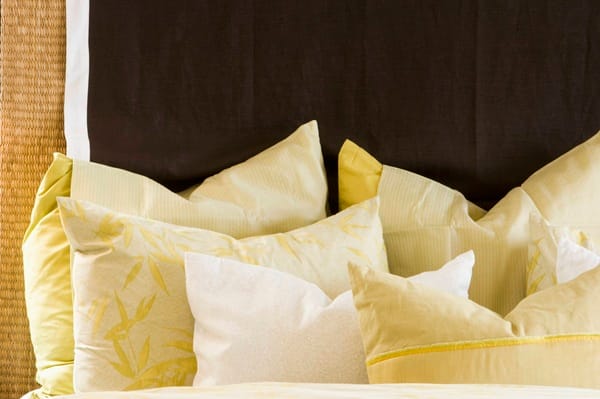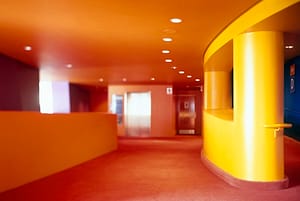Getting ready to sell a Property? Whether it’s your own pad or an investment place you’re looking to turn a quick profit on, it pays to get it looking its best before it goes on those estate agent websites, right? Well, with that in mind, here are some quick tips for staging a house that will really wow those all-important potential buyers.
Sell it like you mean it
Before you even think about sanding floorboards or rearranging your sock drawer, decide on your property staging vibe. Are you aiming for Scandi minimalism, cosy cottage or English country charm? Whatever your choice, commit to it—half-hearted attempts look like your teenager’s homework, all scattergun and rushed. Pick a theme, stick to it, and you’ll look less like a confused decorator and more like a design guru.
Start with a blank canvas
Think of your home as an empty art gallery ready to showcase the buyer’s imagination. To achieve this, remove knick-knacks, family portraits and anything that screams, “I have a dog called Mr Fluffles.” After all, Mr Fluffles might not win hearts in the same way that a pristine, uncluttered space will. Bag up personal bits, box them and store them elsewhere. A streamlined space feels larger, brighter and infinitely more appealing.
Light it up, bright enough to read the small print in the contract
Natural light is your friend, artificial light your understudy. Open curtains, raise blinds and banish heavy drapes to the attic. Clean windows until they practically vanish so the sun floods in, making rooms feel airy, warm and welcoming. Complement with soft, warm bulbs—none of those harsh daylight tubes that make everyone’s eyes water. Add table lamps in cosy corners to soften shadows. If you can read the back of your own head comfortably, you’re on the right track.
Declutter, don’t obsess
Decluttering is not the same as minimalism gone mad. You don’t need empty white walls reminiscent of an operating theatre. Instead, keep everyday essentials but store away duplicates, trinkets and anything that doesn’t serve a practical or decorative purpose. Aim for “lived-in elegance,” not “we’ve moved out and might never return.” A few tasteful objects—an attractive vase, a stack of design books—can suggest a life well lived without drowning the room in stuff.
Paint with personality (but not your last dare)
A fresh coat of paint is cheaper than a holiday and equally transformative. Stick to neutral or on-trend muted tones—greys, beiges, sage greens. Resist that bold purple you fell in love with in 2008; buyers may not share your avant-garde tastes. If you’re keen on a feature wall, make it subtle: slate grey behind a fireplace, dusty blue in a bedroom. Contrast is good, but shocking brights risk making viewers dizzy.
Bring in the green
Indoor plants, especially from a great supplier like Beards & Daisies, are staging gold. They bring life, texture and a sense of calm—everything your buyer never knew they wanted. Opt for low-maintenance varieties: snake plants, spider plants, ZZ plants. Place them strategically in corners to soften edges, on shelves for height variation and on coffee tables for a focal point. If you’re feeling adventurous, cluster different sizes together to create a mini indoor jungle. Just remember to water them; a drooping plant is worse than no plant at all.
Upgrade without breaking the bank
You don’t need a complete kitchen refit to impress a buyer. Swap dated cabinet handles for sleek modern ones. Replace tired light switches and plug sockets. Regrout bathroom tiles if they’re looking grubby. Change showerheads to something with a slightly higher pressure. These micro-upgrades cost a few quid yet scream quality attention. Buyers appreciate that you’ve cared for the home and will assume bigger systems—plumbing, electrics—are equally well maintained.
Stage for your audience, not your Auntie Brenda
Understand who’s likely to buy. Young professionals want home-office nooks; families look for play zones. If you’re selling to retirees, showcase tranquil seating areas, good lighting for reading and minimal trip hazards. You might not know your exact buyer, but consider staging key rooms accordingly. A spare room could look like a bright study with a neat desk, rather than an undecorated attic store for dust bunnies. Make it aspirational but plausible.
Sweeten the scent (but don’t overdo it)
Smell is one of the most powerful senses. Bake a batch of non-nutty cookies—oat and raisin, perhaps—just before viewings. Alternatively, brew a fresh pot of coffee or light a lightly fragranced candle (vanilla, citrus or clean linen). Avoid overpowering scents such as lavender or heavy floral; you don’t want buyers fleeing via the back door because the place smells like an overzealous aromatherapy class.
Soft furnishings set the stage
Cushions, throws and rugs are a staging dream. They add texture, pattern and warmth. Choose complimentary tones and mix materials: a chunky wool throw, velvet scatter cushions, a jute rug. Layer rugs for a cosy effect in living areas. In bedrooms, a textured bedspread with a couple of cushions can make the room feel boutique-hotel polished. These are relatively inexpensive tweaks with outsized impact.
Mirror, mirror on the wall
Mirrors are the secret weapons of interior design. They reflect light, create the illusion of space and add a dash of glamour. Place a large mirror opposite a window to double the natural light. Lean a full-length mirror against a hallway wall to make a poky corridor feel endless. Just make sure they’re spotless; smudges will give the wrong impression.
The power of pendants and lampshades
A statement pendant light in the hall or over the dining table draws the eye and suggests style. Swap out tired lampshades for drum-shaped linen or simple pleated styles. Good lighting accidents are easily forgiven; bad lighting is the stuff of nightmares. Aim for layered lighting: overhead, task and accent. You want your potential buyer to wander through and say, “This place feels right.”
Tech-savvy touches
Smart home features can tip the scales. A smart thermostat is appealing—buyers love the idea of saving on energy bills from day one. A video doorbell suggests modern security. Keep it simple; avoid overloading with gadgets that may seem gimmicky. The message is “I’ve kept this house up-to-date,” not “I’m trying to be James Bond.”
Cookies on the counter or a bowl of fresh fruit
A modest bowl of fresh fruit on a pristine kitchen worktop suggests cleanliness and domestic bliss. A bowl of lemons, stacked in a glass vase, injects a pop of colour without veering into fruit salad territory. In the hallway, a neat tray with a minimal carafe of water and glasses implies hospitality. These small vignettes help buyers imagine daily life unfolding in your space.
Don’t forget the exterior; first impressions count
Curb appeal is critical. Mow the lawn, trim hedges and sweep pathways. Paint or varnish the front door in a colour that complements your home’s exterior brick or cladding—navy, olive green or classic black are popular. Add a simple pot of flowers or a pair of matching planters. An unloved front garden subconsciously plants doubts; a welcoming entrance sets a positive tone.
Let the pros help with the timing and logistics
Most agents have a contact list of professional stagers, carpet cleaners and furniture rental companies. Invest in a consultation; it may feel extravagant, but the return on investment often exceeds the fee. They know what sells and can advise on furniture placement, colour palettes and accessories you might never consider.
Keep it real and don’t stage your home into a museum
While a perfectly staged home looks great in photos, avoid creating a museum where no one could ever live. Buyers want to envisage themselves actually using the space. Leave a few books on a coffee table, fold a magazine over the arm of a chair, display a single pair of shoes by the door. These human touches suggest life without clutter.
Measure twice, sell once
Finally, ensure your staging boasts accuracy. Buyers often measure rooms on their phones to check furniture fit. Tape out hypothetical sofa dimensions on the floor, so you know that designer chaise end will actually fit. Clear markings on skylights and low beams help avoid painful viewings where guests bang their heads.
Staging is all about showing your property in the best light, do that and it will sell easily. Simple, right?






Leave a Comment